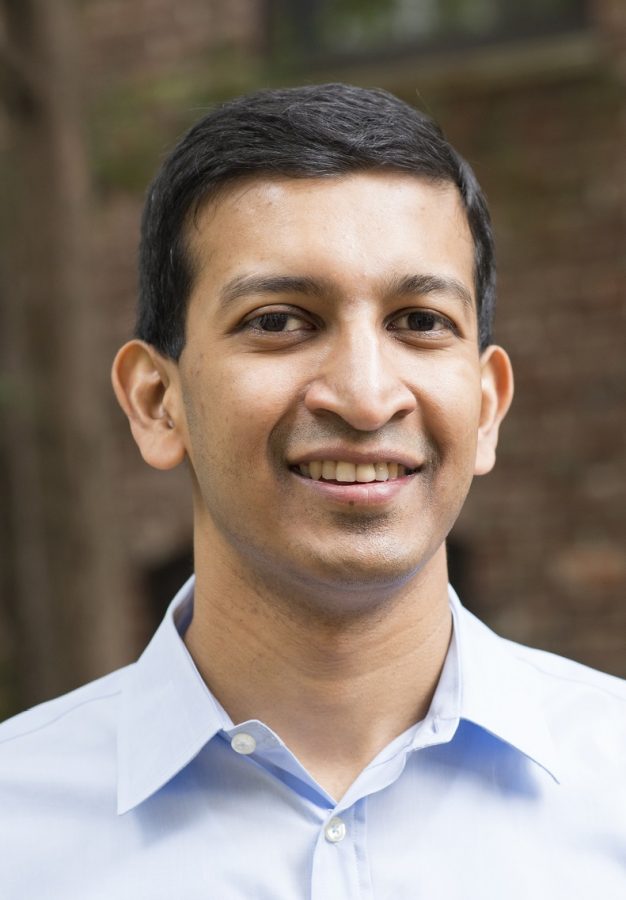Dr. Raj Chetty: Tracking the Recovery
Raj Chetty; William A. Ackman Professor of Economics, Harvard University
November 11, 2020
On October 21 of this year, Vanderbilt was fortunate to hear from renowned economist Dr. Raj Chetty in an event co-sponsored by the University and the Sycamore Institute, a nonpartisan public policy research organization based in Nashville. Dr. Chetty received his PhD in 2003 and at 28 years old became the youngest tenured economics professor in the history of Harvard College.
Dr. Chetty devised a new way to track the country’s economic performance using data from the private sector, which enabled his team to investigate economic trends on a daily basis and draw more precise conclusions. Dr. Chetty and his associates established agreements with credit card companies and other financial institutions to create their Opportunity Insights Economic Tracker, which provides critical information on a variety of economic trends from the beginning of the COVID-19 pandemic through the present.
Dr. Chetty demonstrated the specificity with which his economic model can assess the impacts of the economic downturn. He compared the macroeconomy to a series of dominoes: the many economic trends he discussed impacted one another. He noted that the highest-earning quartile of Americans decreased their spending much more drastically than the lowest-earning quartile. The decreased consumer spending resulted in a decline in revenue for businesses, especially those in wealthier communities whose clientele are those highest-earning Americans. These businesses were forced to compensate for their revenue losses by cutting employment. Thus, those Americans most affected by the economic downturn are lower income individuals who worked in businesses located in wealthier communities; e.g., a food service worker from Spanish Harlem who worked at a small restaurant on the Upper East Side. Such precise information could not be obtained from GDP data, but Dr. Chetty’s model enables this more meaningful analysis.
Utilizing Dr. Chetty’s economic tracker, we also can assess the effectiveness of various COVID-19 economic responses. For one, we know that spending was not tethered to health restrictions imposed by the government, because many comparable states that opened at different times experienced the same recovery pattern.
Additionally, the data reveals several interesting points about the April 15 stimulus checks. Spending immediately leapt by 26% on durable goods (such as refrigerators and kitchen appliances), but in-person spending increased only 7%. The funds largely went to massive online retailers such as Amazon rather than the local restaurants that suffered the greatest losses, which is why many of those businesses have yet to rehire all of their employees. Stimulus packages are intended to fill the holes left by economic shocks, so by that metric, the April 15 stimulus checks did not achieve this mandate.
Small business loans – another significant COVID-19 fiscal policy response – were also ineffective. As they were only given to companies with fewer than 500 employees, we can compare employment trends at those companies with those of larger employers (which were not eligible for government loans) to assess the program’s impact. The U.S. government spent half a trillion dollars to increase small business employment by a meager 2%, which amounts to roughly three hundred thousand dollars spent to restore each job. The program was so inefficient because it was not nearly targeted enough. Many of the firms that received loans were not actually planning on firing anyone, so the U.S. essentially subsidized well-performing companies.
Retail jobs have been particularly impacted by the pandemic, as the sector experiences a virtually jobless recovery. While consumer retail spending and top quartile employment are back above pre-COVID-19 levels, bottom quartile employment is still down almost 20%. Thus, any further recovery programs should bolster employment rather than consumer spending.
Dr. Chetty concluded by emphasizing that policy responses ought to address the specific consequences of the economic downturn rather than generally attempting to “restart the economy.” Stimulus checks reached the wrong companies, filling the coffers of online retailers that did not suffer significant losses due to the pandemic rather than the local businesses that did. Small business loans were well-intended but highly inefficient. Dr. Chetty’s model will enable legislators to more effectively mitigate the continued downturn and promote economic recovery.








